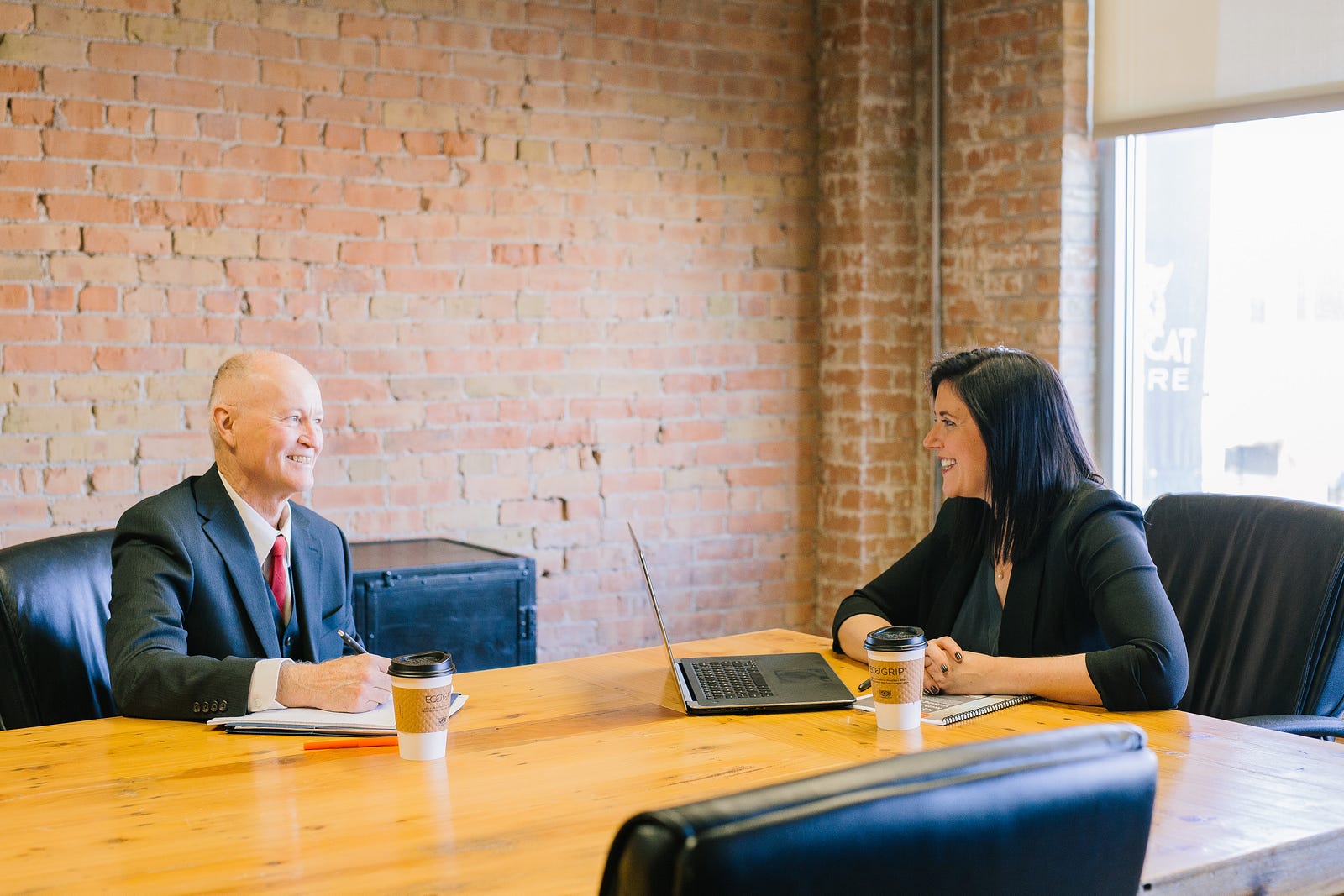
Customer development interviews are one of the best ways to get insights that lead to an amazing product. But that road to insights is often covered by speed bumps that can slow you down and throw you off course.
Initially you might hit all of these speed bumps. But with enough practice and reflection, you will get better at navigating them.
Here are nine lessons that I have learned in years of interviews, false conclusions, reading, trying to get slightly better the next time, workshops, notes and what not.
1. Know your goal well
Ask most people what their goal is in one sentence, and they will give you a laundry list of things they want to do during the interview.
With customer interviews, there are just three top level questions you are trying to answer. You must determine which question is the one you are trying to answer this this interview.
A) What is the real problem, and is it worth solving?
Here’s a typical scenario: We have a problem we want to solve for our customers. We go and ask your customers questions such as “Wouldn’t it be great if we solved this problem for you?” or “How would solving this problem change your life?”
The problem is that you can ask me that about any problem. Would I like it to be solved? I will probably answer yes, even if I don’t care about the problem.
If someone asked: “Wouldn’t it be great if we could reduce all the time you spend cooking and cleaning so that you can enjoy more time with your family?” Of course I would say yes. But that doesn’t mean I’d say yes if you ask me to pay $150 per week.
If you instead focused on how my wife and I cook, how frequently we cook, what types of cuisines and ingredients we use, etc. you would likely find a pattern. In our case, the time I spend cooking with my family is fun. It’s when kids come and sit with us, or play outside, or when we are exhausted, get video game time or screen time. This is not a problem I will pay a lot of money to solve.
So try this instead:
Ask me what’s on my mind. Notice if I express the problem unprompted in the context you are interested in. Notice if I have ever cared enough to look for a solution. Ask if I have come up with a workaround to solve this problem.
Even better, observe me as much as you can. See the things I might not notice myself. The peculiar behavior I might have engaged in to solve a problem.

This is important because after a while we don’t tend to consider problems as problems anymore. We just take them to be part of life.
Uber didn’t solve a problem that people were complaining about. We all had come to assume that public transit will be cheap and inconvenient and taxis will be expensive, smelly, and unreliable.
B) Am I building the right product?
Now that you have a problem worth solving, let’s understand if you are building the right product. You must validate it to see if it solves the problem. But more importantly, you have to gauge if your customers think that it solved their problems.
A classic example is the TO DO List. If customers say that they need a place to track all the random to do tasks they have, and you produced a to do list — well that might have solved the problem as stated. But when you present the solution, you discover that there are deeper use cases that must be solved for the customer to really feel that it solved the problem. In this case, it might be important for your TO DO list to show the right tasks in the right context to help your customers do the right things when they have time.
C) Am I building the product right?
Last, but not least, validate if your customers can use the product without assistance. Do they get feedback, encouragement to the path to achieving their goals? Do they keep coming back to it because the friction involved was lower than their alternatives?
2. Don’t try to ask every single question on your interview guide
Always begin with a detailed interview guide. It should cover your goals, how you want to introduce yourself, the questions you want to solve, how you want to guide the interview, a place for taking notes, etc.
Naturally, most beginners want to ask every single question in the guide. When they have 4 minutes left, and 25 questions to still ask, they sometimes get very nervous. They might then interrupt the customer, ask questions really quickly, and just do whatever possible to get through the guide.
Instead, use the guide as a … guide. Don’t expect to get through the guide in most interviews.
Focus on listening. Let the customer talk.
Focus on listening. Let the customer talk. There might be nuggets of wisdom that you are not looking for.
3. Don’t ask questions that go “A or B”
We know that open ended questions offer the most insights. Yet, I see questions all the time that go like “Why did you do that? Is it because of A …or because of B?”
When we think we know the answer, we want to ask the customer if it is right. We want to make things easy for our customer.
But by asking leading questions, you lose is a whole bunch of insights.
Resist the temptation. Instead ask open ended questions like “How did that make you feel?” or “What made you do that?”

4. Don’t believe generalities; ask for specific events
People lie unknowingly. And the more general the statement, the more likely that it is a lie. Let me give a few examples.
If you ask me “How many times a week do you workout?” I will answer “everyday.” Because that is my ideal self. I workout everyday, no matter what the circumstance.
Of course, ask me to open my calendar and workout log and show you how many times I worked out. Unless eating 🍟and 🍔is a workout, its a lot less than seven days a week.
Most people want to do two things:
- They want to believe that my actions are a lot closer to what I want them to be, and to what I see as my ideal self, than what I see as my current self.
- They want to be liked. They are social creatures. So they want to give you answers that would make you like them, think highly of them, and/or prove your hypothesis.
So they fabricate or exaggerate. Regardless of their intents and purposes, from your vantage point though, they lie.
To prevent these lies, get specific. Ask for actual events. Anytime you catch yourself asking “How many times do you do X,” replace it with “In the last <time period>, how many times did you do X. The more specific you can be, the better.
5. Embrace silence
“Never miss a good chance to shut up.”
— Will Rogers
So often in interviews, the insight is just a few seconds away. The customer has said something, and now they are thinking. There is silence. Hence there is discomfort.
You butt in. You just can’t shut up. You fill in the silence.
The insight is lost forever.
Don’t do that. If there is silence, let there be silence. If you want to do something else to draw more context from the customer, use the technique of verbal mirroring as explained by Chris Voss, former FBI negotiator and author of Never Split the Difference.
Repeat the last few words that the customer said.
Then pause.
For example, if the customer says “Then I sent the invoice. It was so frustrating.” You can repeat: “It was frustrating” and then shut up. Let the customer go on about why it was frustrating and express how they truly felt.
6. Avoid interviewing and taking notes at the same time

Listening takes work. It is very hard to take detailed notes and listen and interview at the same time.
The FBI has three people listening in during intense negotiations. Three seasoned, trained experts.
You want to focus on their body language, tone of voice. You need to figure out where to dig in next. You need to figure out where to go next.
Take it from the experts: have someone else take notes. Or record the interview.
7. Never believe compliments
This is the mistake I have made most often: Believing compliments.
I mean, they thought we were awesome. We had an awesome idea. They also wanted to get notified when we launched.
They also said they would “definitely use it.”
Wow!
Home run!!
Except… think about it. They had to do nothing except say something nice. They got a jolt of pleasure having complemented you. And you felt better too!
Instead, focus on getting something from them that shows real effort on their part.
They can commit three things:
- Time: Ask them to setup a specific time in their calendar for the next call. setup one hour in advance.
- Money: Ask for a letter of intent upfront or some other monetary commitment.
- Social capital: Ask them to introduce you to three of their peers who have the same problem.
8. Use every opportunity to get insights, not just scheduled interviews
(Hat tip to The Mom Test)
You don’t have to call an interview an interview. We are obsessed with formal research. But especially early in research, when you are validating if the problem is worth solving, the speed of learning is everything.
You don’t have to setup an hour long call. You can go to an industry conference, and have informal chats with ten potential customers to see if they have the problem.
When you are validating if the problem is worth solving, the speed of learning is everything.
At your booth you can interview five customers and understand if they have a problem.
Don’t be obsessed about setting ten 45-minute interviews. Just know your questions and assumptions, and start asking people.
9. Understand the problem before validating the solution
Don’t try to do usability tests or tests to understand if your product solves problems without understanding problems first.
Focus on the problem first. Everything else will follow.
Summary
Customer interviews seem just like conversation. But don’t be tricked. Watch out for common speed bumps and do the following:
- Know your goals well
- Don’t try to ask every single question on your interview guide
- Don’t ask questions that go A or B
- Ask for specific events
- Gain comfort with solve
- Ask someone else to take notes for you
- Don’t believe compliments. Believe actions
- Use every opportunity to get insights, not just scheduled interviews
- Understand the problem before validating the solution





